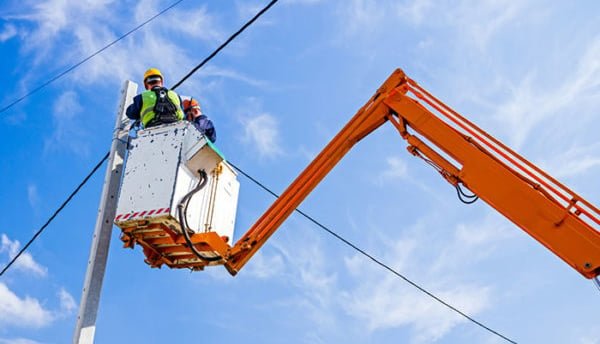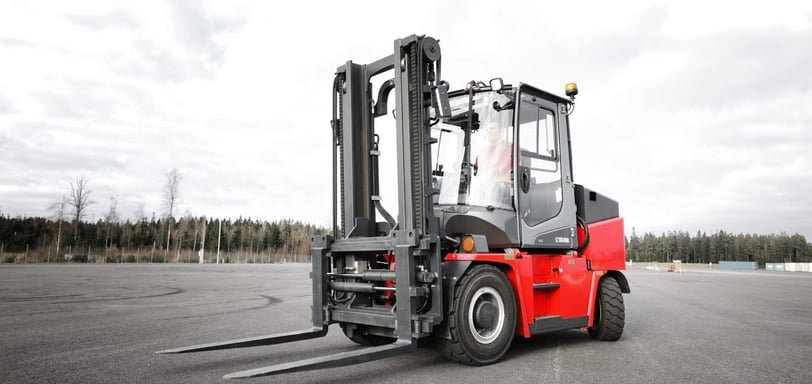Learn how Ontario’s OHSA protects workers from musculoskeletal disorders. Discover causes, prevention, and ergonomic training for safer workplaces.
Musculoskeletal disorders (MSDs) are among Ontario’s most common workplace injuries, often caused by repetitive strain, awkward posture, or forceful exertion. This guide explains how Ontario’s Occupational Health and Safety Act (OHSA) addresses MSDs, what employers must do to prevent them, and how training programs can reduce injury risk.
When Pain Becomes a Workplace Hazard
That dull ache in your wrist or stiff back after a long shift may seem harmless, but over time, it can turn into a serious injury that affects your quality of life.
Across Ontario, thousands of workers develop musculoskeletal disorders (MSDs) every year due to repetitive motion, awkward lifting, or poorly designed workstations.
These injuries are not just painful; they are costly. MSDs account for a large portion of lost-time claims and productivity losses across industries. Under Ontario’s Occupational Health and Safety Act (OHSA), employers have a clear duty to protect workers from ergonomic hazards that can lead to MSDs.
Understanding the causes, legislation, and prevention measures is the first step toward creating a safer, more sustainable workplace.
What Are Musculoskeletal Disorders (MSDs)?
Musculoskeletal disorders are injuries or conditions that affect muscles, joints, tendons, ligaments, nerves, and supporting structures like the neck and back.
They can develop gradually through repetitive strain or from a sudden incident like a fall or overexertion.
Common examples include:
-
Tendonitis: Inflammation of a tendon.
-
Carpal Tunnel Syndrome: Compression of the median nerve in the wrist.
-
Epicondylitis: Known as tennis or golfer’s elbow, caused by repetitive arm movement.
-
Bursitis: Inflammation of small fluid-filled sacs that cushion joints.
-
Back pain: Often due to improper lifting, twisting, or posture.
These injuries often develop silently. Without early intervention, minor discomfort can escalate into chronic pain or permanent disability.
What Causes MSDs in the Workplace?
MSDs typically arise from ergonomic hazards, which include:
-
Repetitive motions such as typing or assembly line work.
-
Forceful exertions when lifting or pushing heavy loads.
-
Awkward postures during manual work or prolonged sitting.
-
Vibration exposure from tools or machinery.
-
Sudden incidents such as slips, trips, or falls.
Each of these factors increases strain on the body’s soft tissues, making injury prevention a shared responsibility between employers and workers.
Ontario’s Legal Framework for Preventing MSDs
Ontario employers must comply with the Occupational Health and Safety Act (OHSA) and several related regulations that govern ergonomics and material handling.
1. The Occupational Health and Safety Act (OHSA)
The OHSA outlines the general duty clause, requiring employers to take every reasonable precaution to protect workers from hazards, including those that cause MSDs. Employers must:
-
Identify ergonomic risks.
-
Provide information and supervision to prevent strain-related injuries.
-
Consult workers and the Joint Health and Safety Committee (JHSC) on identifying and controlling ergonomic hazards.
2. Ontario Regulation 851 – Industrial Establishments
-
Section 45: Covers safe material handling, lifting, storage, and movement of materials.
-
Section 51: Addresses the design, maintenance, and operation of mechanical handling devices.
Additional Ontario Regulations Related to MSD Prevention
Beyond the main Occupational Health and Safety Act (OHSA), several regulations apply to industries with higher ergonomic risks. Each reinforces the province’s goal of minimizing musculoskeletal injuries through proper material handling, equipment maintenance, and worker training.
1. Ontario Regulation 213/91 – Construction Projects
-
Section 37.1 (Housekeeping): Requires materials to be moved and stored in a way that prevents hazards.
-
Tools and Equipment: Employers must ensure that tools are properly maintained to reduce strain and vibration exposure.
Construction workers often face a combination of repetitive lifting, bending, and working in awkward postures. Meeting these requirements helps prevent long-term back, shoulder, and joint injuries.
2. Ontario Regulation 67/93 – Health Care and Residential Facilities
-
Section 103(1) Material Handling: Mandates that materials and equipment in healthcare and residential settings be handled and stored safely to avoid injury.
This is particularly critical for client-handling tasks such as transferring or repositioning patients, where the risk of strain and overexertion is high.
Proper lifting techniques, patient transfer devices, and ergonomic assessments can significantly reduce incidents.
How to Prevent MSDs in the Workplace
MSD prevention requires both proactive management and active worker participation.
Ontario employers should adopt a comprehensive ergonomic program that includes:
1. MSD Awareness and Training
Educate workers and supervisors about early signs of MSDs, proper body mechanics, and how to recognize high-risk tasks.
Encourage early reporting of pain or discomfort before it becomes disabling.
2. Ergonomic Assessments
Conduct regular assessments of workstations, tools, and workflows.
Simple adjustments such as desk height, tool selection, and lift-assist devices can dramatically reduce physical strain.
3. Safe Work Practices
-
Use mechanical aids for lifting and moving materials.
-
Avoid twisting or overreaching during manual handling.
-
Alternate tasks to prevent repetitive strain.
-
Take short micro-breaks to stretch and rest key muscle groups.
4. Early Reporting and Response
Workers should report any symptoms of discomfort or fatigue immediately.
Employers must act promptly by adjusting workloads, reviewing ergonomic setup, or referring the worker for assessment.
Trusted Ergonomic and Safety Resources
Employers and workers can access expert guidance from:
- Ministry of Labour, Immigration, Training and Skills Development (MLITSD):
Ergonomics in the Workplace – Understanding the Law
Manual Materials Handling Guidelines
Client Handling in Health Care
Computer Ergonomics -
Occupational Health Clinics for Ontario Workers (OHCOW):
Workplace Ergonomics and Injury Prevention -
Canadian Centre for Occupational Health and Safety (CCOHS):
Ergonomics Resources
Create a Safer, More Ergonomic Workplace with Achieve Safety
Protecting workers from MSDs starts with education and prevention.
At Achieve Safety, we help Ontario businesses assess ergonomic risks, design safer workstations, and train employees on injury prevention under the OHSA and related regulations.
Our MSD Awareness and Ergonomic Training Programs teach teams how to recognize early warning signs, use proper lifting techniques, and reduce repetitive strain through better workplace design.
👉 Learn more about Office Ergonomic and MSD Training Programs and take proactive steps toward a healthier, more productive workforce.
FAQs – Musculoskeletal Disorders (MSDs) Ontario
Q1. What are musculoskeletal disorders (MSDs)?
Musculoskeletal disorders are injuries or conditions that affect the muscles, joints, ligaments, tendons, nerves, or supporting structures of the body. They develop gradually from repetitive motion, forceful exertion, or awkward posture, and can also result from sudden incidents such as slips or falls.
Q2. What causes MSDs in Ontario workplaces?
Common workplace causes include repetitive movements, heavy lifting, awkward body positions, vibration from tools or machinery, and poorly designed workstations. Without proper training or ergonomic controls, these hazards can lead to chronic pain or disability.
Q3. What is an employer’s responsibility under the OHSA regarding MSDs?
Under the Occupational Health and Safety Act (OHSA), Ontario employers must identify ergonomic hazards, provide information and supervision to reduce risk, and take every reasonable precaution to protect workers from injuries related to repetitive strain or overexertion.
Q4. How can employers prevent musculoskeletal disorders?
Employers can prevent MSDs by implementing ergonomic assessments, redesigning workstations, training staff in safe lifting and posture techniques, rotating tasks to limit repetition, and promoting early reporting of discomfort or fatigue.
Q5. What should workers do if they feel pain or discomfort at work?
Workers should report pain or strain symptoms to their supervisor immediately. Early reporting allows the employer to adjust tasks, assess ergonomic risks, and provide medical or ergonomic support before the condition worsens.
Q6. Are there specific Ontario regulations addressing MSD hazards?
Yes. In addition to the OHSA, related regulations include:
-
Regulation 851 for Industrial Establishments (Sections 45 and 51)
-
Regulation 213/91 for Construction Projects (Section 37.1)
-
Regulation 67/93 for Health Care and Residential Facilities (Section 103)
Each outlines safety measures for material handling, equipment maintenance, and ergonomic control.
Q7. What industries are most affected by MSDs?
MSDs are common in healthcare, construction, warehousing, manufacturing, and office environments. Any task involving repetitive motion, heavy lifting, or awkward posture increases the risk.
Q8. How can Achieve Safety help Ontario businesses reduce MSD risks?
Achieve Safety offers Ergonomic Assessments and MSD Awareness Training in Ontario that meet OHSA and MLITSD guidelines. Our programs teach safe material-handling practices, early detection, and ergonomic design strategies to prevent injuries and improve worker comfort.






